The global EV charging management software platform market was valued at a notable $0.93 billion in 2022. This figure is poised for explosive growth, with a projected compound annual growth rate (CAGR) of 30.3% from 2023 to 2030. Such statistics underscore the burgeoning importance of efficient energy management in the EV landscape.
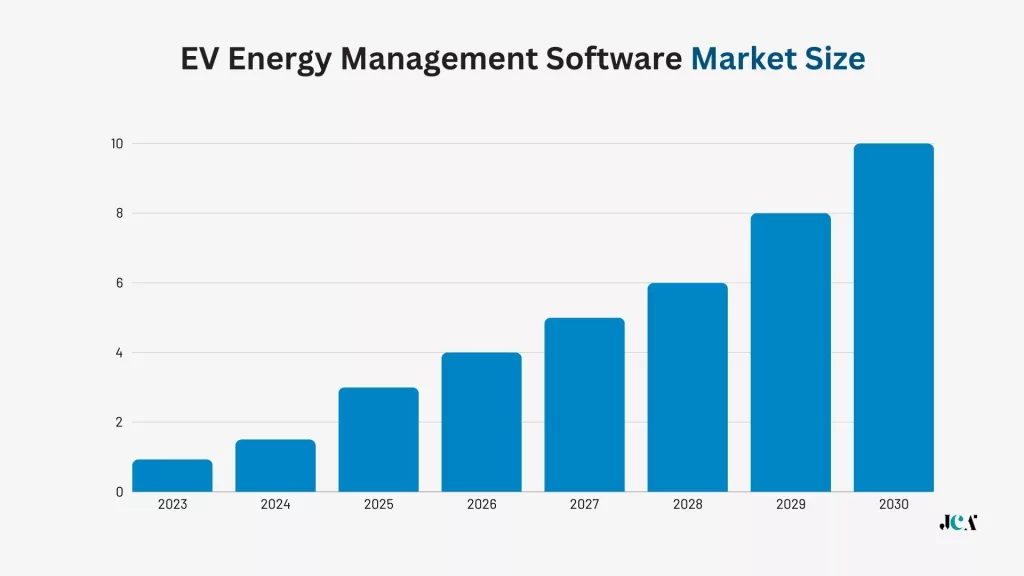
Governments worldwide are not just watching this evolution; they are actively promoting the mass production and adoption of EVs. With the EV market projected to reach an impressive $1103.17 billion by 2030, it’s clear that electric vehicles are not just the future; they are the present.
- What is an EV Energy Management System?
- How Energy Management System Optimize EV Performance?
- How Energy Management System Extends Battery Life and Vehicle Range?
- Future Trends in Energy Management Systems
- Challenges and Solutions in Developing Advanced Energy Management Systems
- Case Studies: Success Stories in EMS Implementation
- Conclusion
What is an EV Energy Management System?
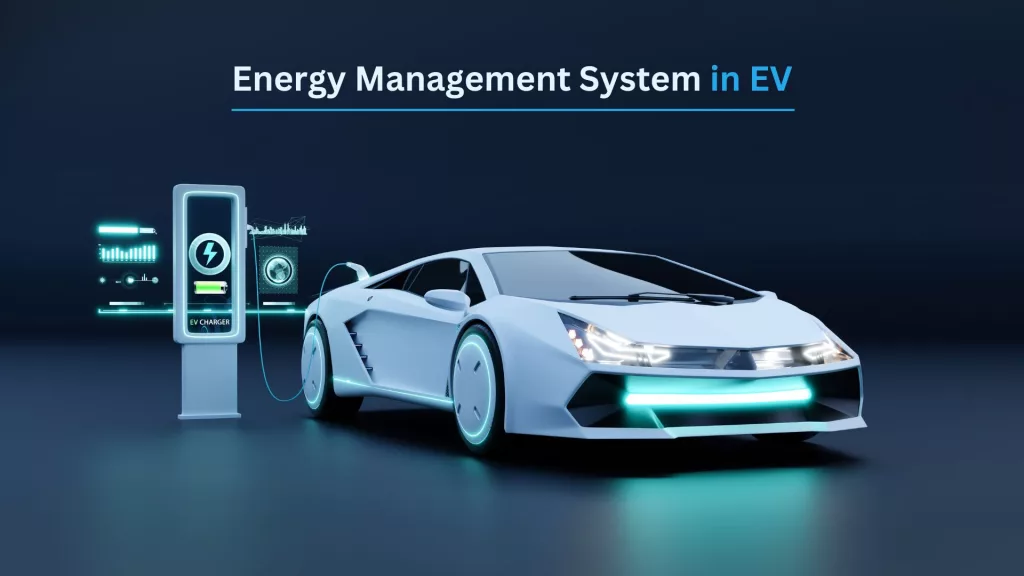
An EV Energy Management System (EMS) is a sophisticated technology designed to optimize the charging and discharging processes of electric vehicles (EVs). It ensures efficient energy use and prolongs battery life. It also integrates with broader electrical grids or renewable energy sources. By intelligently managing how an EV interacts with charging stations and even how it can return energy to the grid, the system supports sustainable transportation.
An EV Energy Management System uses real-time monitoring and predictive analytics to optimize charging times. It considers energy prices, grid demand, and renewable energy availability to reduce costs and environmental impact. This system improves electric vehicles’ efficiency and performance, making them more convenient and cost-effective. It also supports energy system stability and sustainability.
Also read: The Role of IoT in Industrial Automation
How Energy Management System Optimize EV Performance?
Imagine driving a car that knows you. It understands your driving habits, the roads you take, and even how you like your ride to feel. That’s what an Energy Management System (EMS) does in an electric vehicle (EV). It’s like a smart brain inside your car, making sure your EV runs smoothly and efficiently.
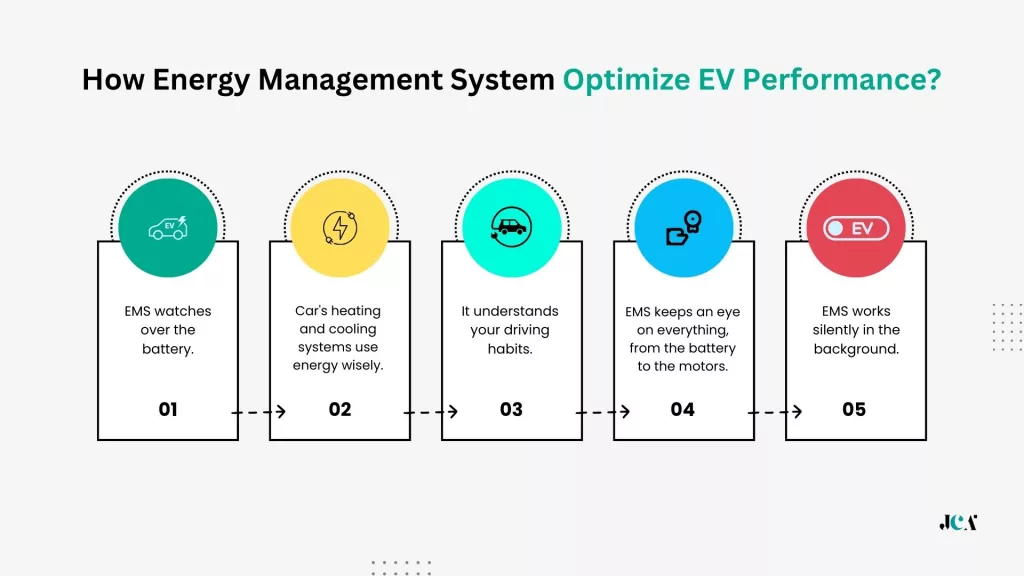
You might wonder, how does this work? Well, EMS watches over the battery. It decides when to use energy and how much to use. This means you get the most out of every charge. You won’t have to worry about running out of power suddenly. It’s all taken care of.
But EMS doesn’t stop there. It also looks after your comfort. It makes sure your car’s heating and cooling systems use energy wisely. This way, you stay cozy without wasting power. It’s like having a smart assistant that always looks out for you and your car’s needs.
EMS keeps an eye on everything, from the battery to the motors, and even the lights. It makes small adjustments all the time. This ensures your car is always running at its best. You get a smooth ride, and your battery lasts longer. It’s a win-win.
The best part? You don’t have to do anything. EMS works silently in the background. You might not even know it’s there, but it’s always working hard for you. It’s making sure your EV is ready to go whenever you are, making your life easier and your drives better.
Isn’t it amazing how much thought goes into making your EV experience the best it can be? That’s the power of Energy Management System. It’s more than just technology; it’s your reliable partner on the road, ensuring your journey is always smooth and efficient.
Related: The Future Of Artificial Intelligence: Will We Be Ruled By Robots?
How Energy Management System Extends Battery Life and Vehicle Range?
Did you know your electric vehicle’s (EV) battery is a bit like a smartphone battery? Just like how you want your phone to last as long as possible, you want the same for your EV’s battery. The good news is, the Energy Management System (EMS) is here to help make that happen.
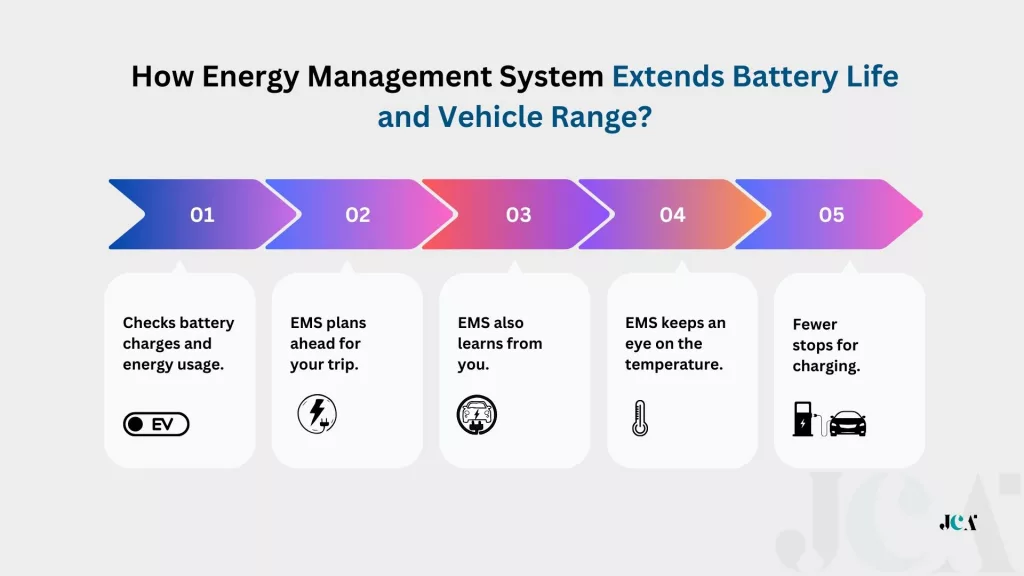
Here’s how it works.
EMS watches how the battery charges and uses energy. It’s always working to make sure the battery doesn’t get too tired or overloaded. This careful watch helps your battery live a long, healthy life.
Just think you’re going on a long trip. EMS plans ahead. It thinks about the road, the hills, and even the traffic. Then, it figures out the best way to use the battery’s power. This way, you can go further on a single charge. You won’t have to stop and charge as often. So, it’s like having a smart co-pilot who knows all the shortcuts.
But there’s more. EMS also learns from you. It notices how you drive and adjusts to make things more efficient. If you’re a speedy driver, it finds ways to save power. If you love a smooth, slow ride, it adjusts for that too. It’s always finding new ways to make your battery last longer and take you further.
Let’s not forget about the weather. Just like us, batteries don’t like being too cold or too hot. EMS keeps an eye on the temperature and makes sure the battery stays at normal temperature. This isn’t just good for your battery; it means you always get a great drive, no matter the weather outside.
So, what does all this mean for you? It means more adventures, fewer stops for charging, and a happy, healthy battery that stays strong for years. EMS is your EV’s secret weapon, making every drive better and every charge last longer.
With EMS, you’re not just driving; you’re cruising into the future, one efficient, well-planned journey at a time.
Curious about what the future holds for EMS and EVs? Let’s explore the exciting advancements on the horizon.
Also have a look at: Unveiling Uncommon Marketing Ideas and Strategies
Future Trends in Energy Management Systems
As we journey further into the world of electric vehicles (EVs), the role of Energy Management Systems (EMS) is set to become even more fascinating. Picture this: your EV not only gets you from New York to Seattle but also does so in the smartest, most efficient way possible. This can be done using the ever-evolving EMS technologies.
So, what’s on the horizon for EMS?
First, think about an EMS that’s even smarter than it is today. We’re talking about systems that use artificial intelligence (AI) to learn from every drive. Imagine your EMS predicting your next move, knowing the best times to charge based on electricity rates, or finding the most energy-efficient routes in real-time. This isn’t just the future; it’s what’s next.
Next, consider the power of connecting.
Future EMS will communicate with charging stations, other cars, and even the city itself. This means your car could suggest a detour to avoid a busy charging station or adjust its driving style to match current traffic conditions, all by itself. It’s like having a network of friends all working together to make your journey smoother.
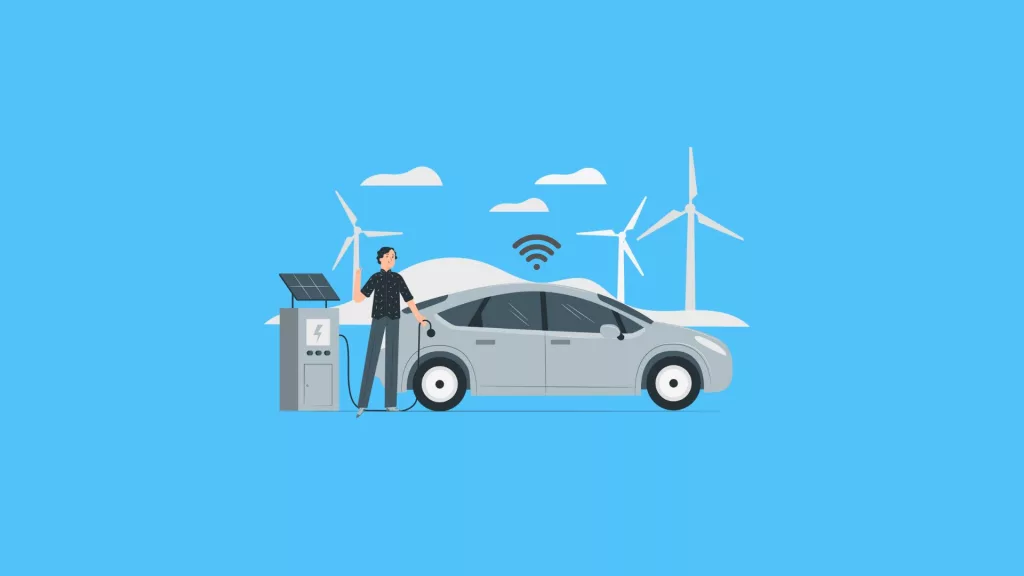
There’s more to know.
Renewable energy integration is a big part of the future of EMS. Imagine your EV not only manages its energy but also decides when to store energy from the sun or wind. On sunny days, your car could charge itself with solar power, reducing the need for traditional charging stations and making your drive even greener.

Lastly, let’s talk about customization.
Future EMS will offer personalized settings that match your driving preferences and lifestyle. Whether you prioritize performance, range, or battery health, your EMS will tailor its strategy to suit you. It’s like having a bespoke suit, but for your driving experience.
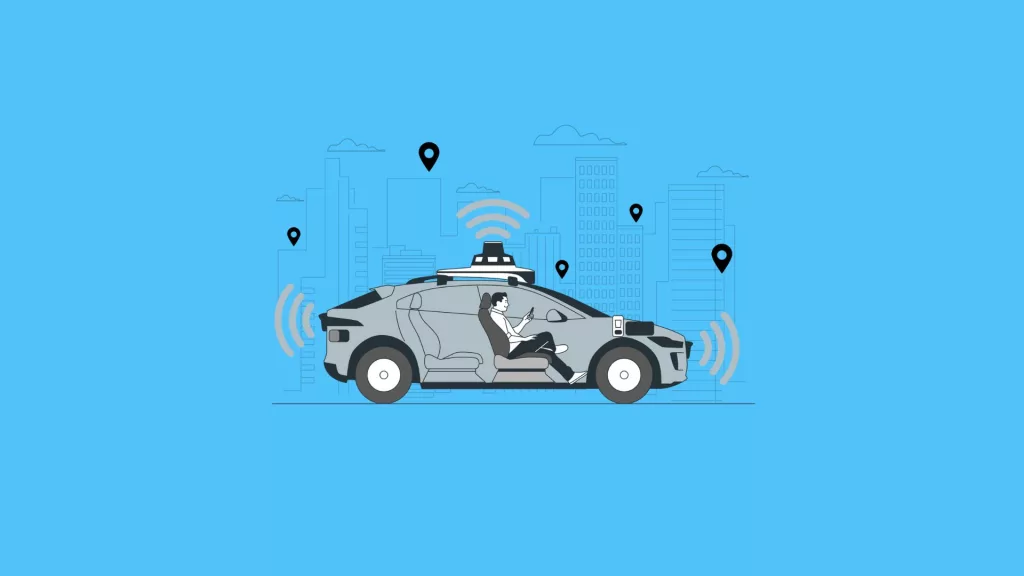
These advancements promise a future where driving an EV is not just about getting around. It’s about doing so in the smartest, cleanest, and most personalized way possible. With these innovations in EMS, the future of EVs is not just bright; it’s electrifying.
Also read: 25 Premier Healthcare Software Development Companies
Challenges and Solutions in Developing Advanced Energy Management Systems
As we dig deeper into the segment of electric vehicles (EVs), the development of advanced Energy Management Systems (EMS) is not without its challenges. Yet, for every challenge, innovative minds are already at work crafting solutions. Let’s break down some of these challenges and explore the solutions that are paving the way for a smoother journey into the future of EVs.
Challenge 1: Complexity of Integration
The more advanced an Energy Management System becomes, the more complex it is to integrate with the various components of an EV. From the battery and electric motors to the heating and cooling systems, everything must work in harmony.
Solution: Modular design and open standards are becoming the keys to simplification. By creating systems that can easily integrate with various parts of an EV, developers are making EMS more adaptable and easier to upgrade as new technologies emerge.
Challenge 2: Peak Power Consumption During Acceleration and Deceleration Periods
When electric vehicles (EVs) speed up or slow down, their batteries use a lot of power quickly. This can make the batteries wear out faster, which means the car can’t go as far on a charge.
Solution: This is why mixing different types of energy storage, or “hybridization,” is a smart idea. It can help solve these problems.
Here’s how hybridization and smart energy management (EM) strategies can make a big difference:
- Better Use of Energy: It helps use the battery and other energy storage in the best way when charging and discharging. This means not too much strain is put on the battery all at once.
- Boost Performance: By managing energy smartly, the car works better. This means it can go faster and smoother, making the ride more efficient.
- Longer Drive Range: With this smart use of energy, the car can go further on a single charge because it’s not wasting any power.
- Smaller Battery Needs: Because the energy is used so efficiently, the car might not need as big a battery. This can make the car lighter and less expensive.
So, by using a mix of energy sources and managing them well, EVs can last longer, drive further, and even save money in the long run.
Challenge 3: Predicting Driver Behavior
An Energy Management System that can adapt to individual driving habits offers the potential for significant efficiency gains. However, accurately predicting driver behavior is incredibly challenging due to its variability.
Solution: Machine learning and AI are stepping up to this challenge. By analyzing large datasets on driving patterns, Energy Management System can learn and predict driver behavior with increasing accuracy, allowing for real-time adjustments that optimize energy use.
Challenge 4: Balancing Performance and Efficiency
Drivers expect their EVs to not only be efficient but also to deliver on performance. Striking the right balance between these two aspects can be difficult.
Solution: Advanced algorithms and better sensors are enabling EMS to dynamically adjust settings for optimal balance. For instance, an EMS might prioritize efficiency on a long highway stretch but switch to performance mode in city driving, all based on real-time data.
Challenge 5: Keeping Up with Rapid Technological Advances
The pace of innovation in EV technology is blistering, and EMS must keep up to ensure compatibility and take advantage of new efficiencies.
Solution: Cloud connectivity and over-the-air (OTA) updates are becoming standard features for EMS. This allows for continuous improvement and adaptation to new technologies without the need for physical modifications to the vehicle.
Challenge 6: Ensuring Security
As EMS become more connected, the risk of cyber threats increases. Ensuring the security of these systems is paramount to protect user data and vehicle functionality.
Solution: Cybersecurity is being baked into the design process of EMS. Encryption, secure boot mechanisms, and regular security updates are just some of the measures being adopted to shield EMS from cyber threats.
The path to perfecting EMS in EVs is indeed filled with challenges, but with every obstacle comes an opportunity for innovation. As we tackle these challenges head-on, we’re not just improving EMS; we’re driving the entire EV industry forward. We are moving toward a future where electric vehicles are smarter, more efficient, and more in tune with the needs of drivers and the environment.
Also read: 5 Unique Ways VR is Transforming eCommerce with Examples
Case Studies: Success Stories in EMS Implementation
By intelligently optimizing how an EV uses, stores, and even generates energy, EMS technology is leading the charge towards a more efficient and sustainable future. Here are some real-world success stories that illustrate the power of EMS in EVs.
1. Maximizing Savings with Tesla Model S
The Tesla Model S, renowned for its cutting-edge technology, incorporates an EMS that not only optimizes battery usage and charging based on your driving habits but also pre-heats the battery in colder weather.
This ensures the vehicle operates at peak efficiency, potentially reducing energy costs by up to 15%. The precise savings will vary depending on individual driving patterns, but the impact on both wallet and environment is significant.
2. Enhancing Range with Nissan Leaf
The Nissan Leaf, one of the world’s most popular EVs, benefits from an EMS that meticulously monitors battery health and adjusts power usage to maximize efficiency.
For drivers concerned about charging, the system can direct you to the nearest charging station and even predict the necessary charging time to ensure you reach your destination without running low on power.
This capability not only extends the vehicle’s battery life but also boosts its range, making longer journeys worry-free.
3. Pioneering Sustainability with BMW i3
The BMW i3 takes EMS a step further by integrating the vehicle with renewable energy sources, such as solar panels. This feature allows drivers to charge their EVs with clean, self-generated power, significantly reducing the carbon footprint associated with driving. It’s a prime example of how EVs are moving beyond mere transportation to become key components in a more sustainable energy ecosystem.
The Impact of EMS on the EV Market
The incorporation of EMS in electric vehicles is making a profound impact on the automotive industry. By offering significant savings on energy costs, extending vehicle range and battery life, and promoting the use of clean, renewable energy sources, EMS is not only appealing to eco-conscious drivers but is also setting a new standard for what consumers expect from their vehicles.
As we look to the future, the role of EMS in EVs is only set to expand, driving innovation and pushing the boundaries of what’s possible in automotive efficiency and sustainability. The result is a growing market of drivers eager to embrace these technological advancements, marking a pivotal shift towards a greener, more sustainable mode of transportation.
Conclusion
Throughout this article, we’ve navigated the intricate world of Energy Management Systems (EMS) in Electric Vehicles (EVs), uncovering their pivotal role in optimizing EV performance, extending battery life, and ensuring a sustainable future. Here are the key takeaways:
- EMS is the brain behind EVs, optimizing energy use to enhance performance and extend vehicle range.
- Advanced strategies employed by EMS ensure batteries last longer, contributing to the sustainability of EVs.
- The future of EMS promises even smarter, more connected, and personalized driving experiences, thanks to AI, machine learning, and integration with renewable energy sources.
As we stand at the threshold of a new era in automotive technology, it’s clear that the journey of EMS in EVs is only getting started. With continuous advancements and innovations, the road ahead is both promising and exciting.
The journey of EMS is not just about enhancing the driving experience; it’s about charting a course towards a sustainable automotive future, one innovation at a time.










Leave a Reply